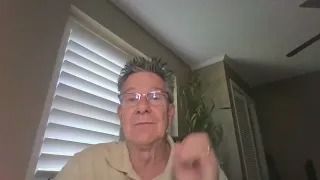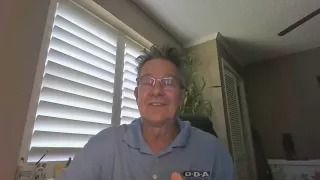do you need a little extra income to qualify for that mortgage
Didier Malagies • January 22, 2024
Ask a Mortgage Question
Use the form below and we will give your our expert answers!
203H Ask A Question
Start Your Loan
with DDA todayYour local Mortgage Broker
Mortgage Broker Largo See our Reviews
Looking for more details? Listen to our extended podcast!
Check out our other helpful videos to learn more about credit and residential mortgages.

1. Cash-Out Refinance How it works: You replace your current mortgage with a new, larger loan and take the difference out in cash. Pros: Often lower interest rates compared to other methods. Longer repayment terms. Cons: Closing costs (typically 2–5% of the loan amount). Resets your loan term (could be 15, 20, or 30 years). Tougher underwriting for investment properties vs primary residences. 2. Home Equity Line of Credit (HELOC) How it works: You get a revolving line of credit based on your property’s equity. Pros: Flexibility — borrow what you need, when you need it. Pay interest only on what you draw. Cons: HELOCs for investment properties are harder to get and may have higher rates. Variable interest rates (payments can increase). 3. Home Equity Loan ("Second Mortgage") How it works: A lump-sum loan secured by your property's equity, separate from your existing mortgage. Pros: Fixed interest rates and predictable payments. Cons: Higher rates than primary mortgages. Separate loan payment on top of your existing mortgage. 4. Sell the Property How it works: You sell the investment property and realize your equity as cash. Pros: Immediate full access to equity. No debt obligation. Cons: Capital gains taxes may apply. You lose future appreciation and cash flow. 5. Portfolio Loan How it works: A loan based on a group (portfolio) of your properties' combined value and cash flow. Pros: Useful if you have multiple properties. Lenders may be more flexible on qualifications. Cons: Complex underwriting. Higher costs. 6. Private or Hard Money Loan How it works: Short-term, high-interest loan based on property value, not personal credit. Pros: Fast funding (days instead of weeks). Less strict underwriting. Cons: Very high interest rates (often 8%–15%+). Short loan terms (often 6–24 months). 7. Seller Financing (if you're buying another property) How it works: If you own a property free and clear, you could "sell" it and carry financing, creating cash flow and upfront cash through a down payment. Pros: Passive income from note payments. Cons: Risk if the buyer defaults. Key Factors to Think About: How quickly do you need the cash? How much do you want to borrow? How long do you want to be repaying it? How the new debt impacts your overall portfolio. tune in and learn https://www.ddamortgage.com/blog didier malagies nmls#212566 dda mortgage nmls#324329

When you're buying a home, it's not just about affording the purchase price or down payment. You’ve got closing costs, moving expenses, and all the “surprise” things that come up after you move in — like needing a new appliance, fixing a plumbing issue, or just furnishing the place. Keeping some cash reserves is smart. A good rule of thumb is to have at least 3-6 months of living expenses saved after the purchase, just in case life throws a curveball. Are you thinking about buying soon or just planning ahead? tune in and learn https://www.ddamortgage.com/blog didier malagies nmls#212566 dda mortgage nmls#324329

Wade Pfau, a leading voice in retirement income planning, has long advocated for the strategic use of reverse mortgages —and current market volatility could reignite interest in this often misunderstood tool. 🔁 Why Market Volatility Renews Reverse Mortgage Talks In times of market downturn, retirees face sequence of returns risk , meaning early losses can severely impact the longevity of their portfolio. Pfau suggests that reverse mortgages , particularly Home Equity Conversion Mortgages (HECMs) , can act as a buffer asset to avoid selling investments at a loss. Here's how: During market dips , retirees can pull funds from a reverse mortgage line of credit instead of their investment accounts. This gives their portfolios time to recover before resuming withdrawals. Result : More sustainable income and potentially greater long-term financial security. 🧠 Shift in Strategy: Not Just a Last Resort Pfau argues that reverse mortgages should be considered early in retirement planning , not just as a last-ditch effort: Opening a HECM line of credit early can grow over time due to the compounding credit line. Provides flexibility and tax-efficient access to funds. Helps retirees coordinate income sources between portfolio withdrawals, Social Security, and home equity. 👓 Changing Advisor Perspectives Financial advisors—previously skeptical—are beginning to see reverse mortgages in a new light: Volatile markets have prompted a more open-minded view among planners. More are incorporating reverse mortgages into holistic retirement income strategies . Bottom line : Market volatility doesn’t just threaten retirement—it also opens the door to rethinking traditional strategies . As Pfau puts it, home equity is too significant a resource to overlook, and when used wisely, reverse mortgages can enhance retirement resilience


